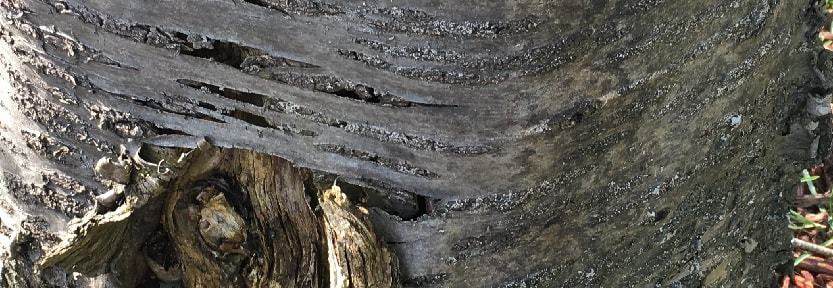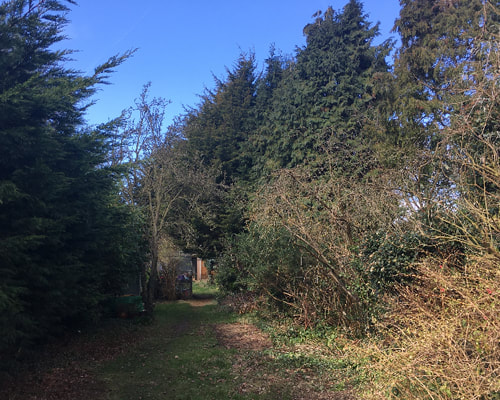|
It’s often the case that many people haven’t heard of tree surgeon, until they are in need of one. Tree surgeons, also known as arborists, look after the health of your trees. They can assess if a tree needs to be felled, its health condition and appropriate action that can be taken to improve its look and shape.
Tree surgeons have a unique set of skills. They must be physically fit to climb up and down trees and be knowledgeable about the different biological afflictions that can affect trees such as various funguses and parasites.
0 Comments
Have you noticed something odd on your tree? Do you think there might be something wrong with it? Here is a quick guide on how to visually inspect your tree.
Start from the bottom up. Start by examining the roots. Look for signs of the ground heaving up, severed roots or signs of decay or fungi, such as mushrooms. Then move up towards the tree trunk - just above the soil. Can you see any peeling, loose bark, cracks or deep slits? Inspect the rest of the trunk for signs of decay, such as signs of swelling, cavities, soft or decaying wood or small holes. Finally, look up at the canopy, the upper layer of branches and leaves. Can you see any signs of:
If you have any concerns about your tree and would like one of our qualified arborists to come and inspect your tree, just give us a call. We will advise you on what we think is the best treatment for the tree, or whether it would be better to have the tree removed. Let us help you ensure the best care for your trees. Tree-Surgeon Essex is made up of a team of professional arborists that love working with trees all year round across Essex covering: Basildon, Brentwood, Chelmsford, Epping, Havering as well as areas in East London including Redbridge and Barking & Dagenham. Give us a call today on 01708 578 017. We offer advice on: - Tree Pruning - Tree Removal or felling trees - Pollarding - Crown lifting/raising - Crown thinning - Crown reduction - Stump grinding/removal - Hedge trimming - Emergencies - Site clearance Like with any new flowers, plants, shrubs, hedges and trees – taking the time to understand how best to look after them will ensure that they always look their best. It’s common for people to believe that trees simply look after themselves, but this is not the case. They can suffer from disease, rot and infestations. Well-established trees and shrubs, after years of growing well, can start to decline and that is why it is important to get them regularly inspected by a tree surgeon. The following list outlines a few issues that your tree can suffer from. Powdery mildew This issue can be seen on oak trees. It’s a fungal disease of the foliage and stems which covers the surface of the plant. This issue commonly occurs during summer which is caused by dryness at the roots and poor air circulation. Once solution is to add mulching and avoid high-nitrogen products. Drought stress Tree often get overlooked during dry spells. If left without water for very long periods they will experience, leaf browning, tree decline and increased susceptibility to insect and disease. Nutrient deficiency There are cases when trees are not suited to the soil that they have been planted in and become deficient in iron, manganese or different macro and micro nutrients. Nutrient deficiency manifests in the following ways: partial or complete yellowing of leaves, stunted growth, poor flower or fruit production. Pest infestation This issue is caused by dead leaves and branches as well as mal-pruning. If left un-inspected, the tree can become a hazard to people and pets within the vicinity. If one or more of these symptoms rings a bell – get in touch Tree-Surgeon Essex today! We understand that there is little we can do about the age of your tree, but we believe that it is always worthwhile investigating other potential causes. We are happy to make a free no-obligation assessment of your tree to see if we can apply one of our services to make it better. Call 01708 578 014. If you would like to have a free assessment of your conifer trees, we cover the Essex area including:
tree surgeon Hutton | tree surgeon Doddinghurst | tree surgeon Ingatestone |tree surgeon Ingrave | tree surgeon Blackmore | tree surgeon Warley | tree surgeon Mountnessing | tree surgeon Herongate | tree surgeon Navestock |tree surgeon South Weald | tree surgeon Wyatts Green Conifers do not need extensive pruning and most are best left to assume their natural shape, with the occasional pruning of an overly long shoot. Occasionally, however, you may need to undertake more substantial pruning if the conifer starts to get too big for its position. Plants can be clipped annually with shears to keep them small and neat. Do not prune back to leafless brown stems because these will not re sprout. Cut back whole stems to restrict the size of ground hugging conifers, making the cut under a newer, shorter shoot that will hide it. Conifers that have become too overgrown should be removed. Another problem that should be pruned out as soon as it occurs is reversion, all green growth on variegated forms. Use scatters or prunes to remove these vigorous shoots, otherwise they may dominate the more decorative foliage. Most conifers produce resinous sap that bleeds freely from the stems if they are cut while the tree is in active growth. Pruning is therefore best carried out from autumn to mid winter while the tree is dormant. Use sharp, clean pruning tools as blunt blades will snag the wood and may provide an entry point for disease. Wear gloves and goggles and, if you are using power machinery, protective clothing is recommended. Once established, conifers will largely look after themselves. Mites and aphids can be problems on pines and spruces respectively, causing the needles to drop and producing unsightly care stems. Aphids are easy to control with insecticidal sprays, but mites are more persistent, you may wish to get in a professional to treat an affected specimen. Mites are particularly active during warm, dry years when conifers are under stress. You can help prevent outbreaks by watering conifers during a drought and spraying the foliage occasionally to increase air humidity. Do this in the evening to avoid scorching the foliage on a sunny day. Most conifers prefer a position in full sun, but many will tolerate partial shade or being in deeper shade for just part of the day. They will not grow well in dense shade or waterlogged soil. If your soil is heavy, you could try draining it, improving the structure, by adding plenty of well rotted organic matter and grit before planting, or creating a special conifer raised bed. Many slow growing dwarf conifers also so well in containers. A newly planted tree or shrub needs to be watered well in order to become established. You need to mulch it with straw or garden compost to conserve the moisture in the soil. |
Categories
All
Archives
June 2023
|
|
Copyright © 2024 Tree Surgeon Essex
All rights reserved Our data and privacy policy Website designed by Perfect Layout Digital Marketing |
Hours: M-F: 8am-6pm
|
Tel: 01708 578 017 |
Email: [email protected]
|





 RSS Feed
RSS Feed


